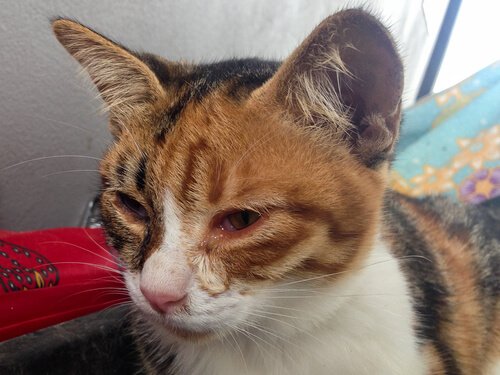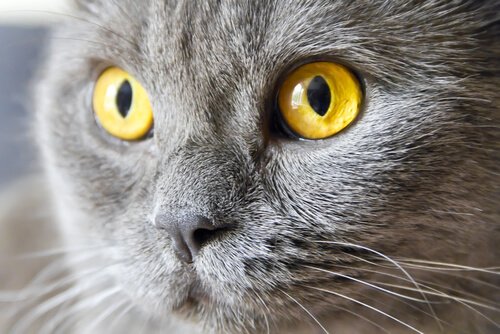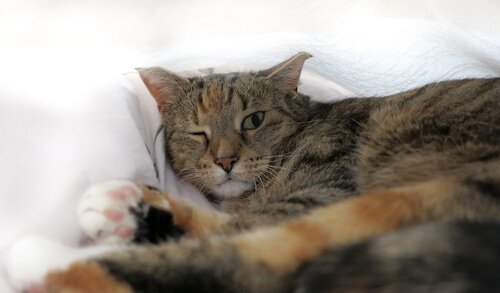Feline Uveitis: Causes, Symptoms, and Treatment

One of the most admired aspects of cats are their beautiful eyes. Their shape and color are almost hypnotic. Therefore, as a responsible pet owner you should take care of your cat as much as you can. One of the more common vision issues in cats is feline uveitis. Continue reading this article to learn all about this disease.
What is feline uveitis?
Feline uveitis is an ophthalmological disease in felines. It can cause viruses and fatal diseases, such as leukemia. At the same time, this disease of the uvea can also be related to wounds or bruises. Therefore, a cat that’s been hit in an accident or fight could contract this disease without having any illness.
Causes of feline uveitis
The uvea (or uveal tract) is the vascular tissue of the eye. It’s like a membrane, an immune barrier protecting the fluid of the inner-eye.

When it comes to vascular tissue, it’s common for viral disorders and other diseases to cause changes in these tissues. These changes can result into tears or inflammation.
Symptoms and diagnoses of feline uveitis
A cat owner can more or less easily notice the symptoms of this disease. If you do detect one of these behaviors, take your pet to the nearest vet immediately to avoid further health scares.
- Cat expresses light sensitivity
- Pain or tears
- Worsening vision
- Stains or marks in the aqueous humor
- Pus in tear ducts or on the inside of eyelids
- Change in eye color

A professional should always be the one to determine whether your cat has feline uveitis or any other eye condition, such as conjunctivitis.
Treating feline uveitis
Once a specialist has diagnosed your cat, he/she will prescribe a treatment that will likely have two components: the specific, then the palliative.
That means that one medication (usually a corticosteroid) attacks the root of the problem. The other medication (normally anti-inflammatories) is used to diminish the secondary effects of the disease, like pain or swelling.
It’s worth mentioning that these treatments are fundamental to avoid further complications with inner eye inflammation. This includes lenticular issues, such as cataracts, glaucoma, detached retinas, and blindness. Likewise, it’s important to mention that the effectiveness of these medications depend largely on the strain of uveitis and how quickly the treatment took place.
Lastly, you must remember that uveitis is connected to physical trauma is easier to treat, just like uveitis during its early stages. Therefore, it’s important to be aware of your cat’s behavior to make sure he is happy and healthy.